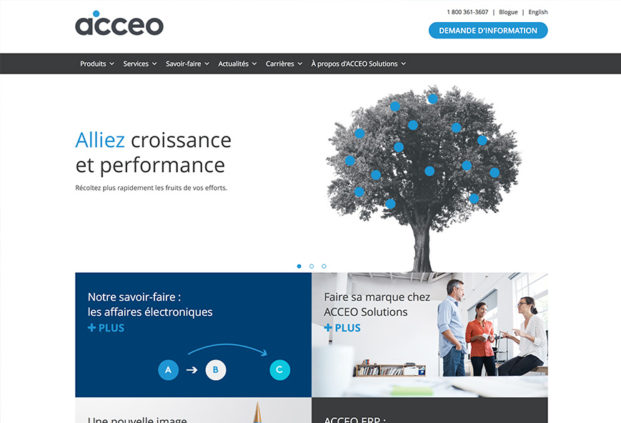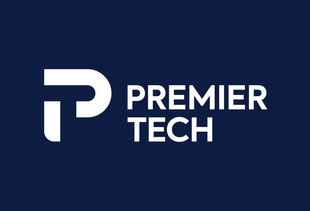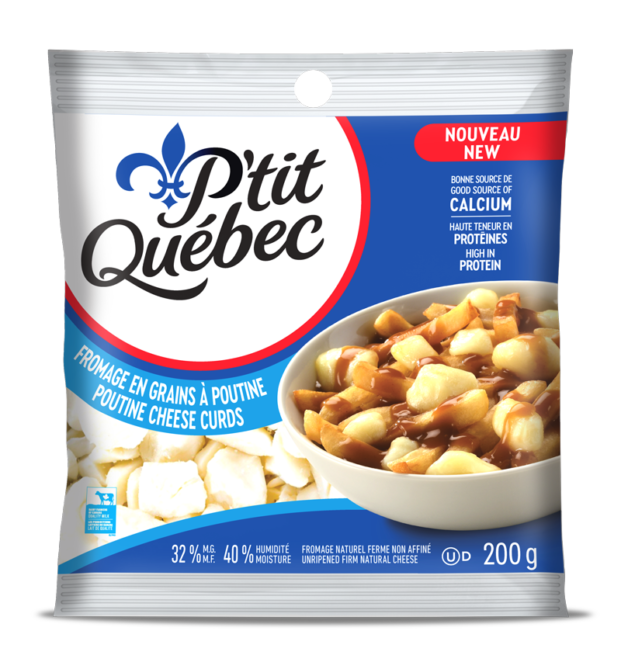For instance, the addition of a family of complementary products to its existing portfolio; entry into a new geographic market; the acquisition of transformative technologies; or as a means to become a consolidator in a market sector. In the majority of cases, the basic argument is growth in performance and income that you want to achieve, or even a new value proposition that you want to develop.
Yet in a survey conducted by McKinsey*, a third of firms that had completed a merger or acquisition failed to meet their performance and revenue growth targets.
Why? Undoubtedly, the two parties to the transaction worked hard to come up with the best possible agreement for their respective shareholders and stakeholders. Their boards scrutinized the value of the transaction and the strategy behind it. Financial, legal and tax advisers were brought in. Efforts were made to develop integration scenarios; the range of products and services and the lists of customers and territories served were meticulously studied; organizational structures were analyzed; compatibility of equipment, facilities and computer systems was assessed. In short, everything that is quantifiable and concrete was taken into account.
But what about what’s not on spreadsheets or flowcharts? What about the value or reputational awareness of corporate brands or brand portfolios? Are they not the main sources of revenue? Should we not evaluate these brands and, if necessary, realign them to match the growth vision on which the transaction is based if we want to propel the organization to new heights?
Often, in the rush to sort out the more tangible aspects of the transaction, brand issues are overlooked, or only considered late in the process. Yet if not addressed early enough, these important issues can stand in the way of realizing the full revenue growth potential of the deal. Also according to McKinsey, for half of companies that set up integration committees after a merger or acquisition, there is a critical lack of thinking about the branding and sales strategies. So why not initiate this reflection on brand strategy within the integration committee, when we know the brand and its attributes have an important impact not only on financial performance but also on employee engagement?
BrandBourg has worked closely with several clients who opted for a transformative business merger or acquisition, in a variety of industries. Our experience allowed us to identify and influence the conditions and success factors in order to evolve their brands in a wide variety of contexts.
The corporate brand is typically the most enduring, but also the most fragile, asset in the business. Decisions made with regard to the corporate brand require a general overview as well as a detailed analysis, which together will help create the renewed brand and plan its launch and implementation.
The integration team and the integration plan must take into account the strategic, identity and communication aspects of the brand.
A. How should the new entity be named? Should we evolve the corporate brand’s identity or totally revamp it?
What is the most relevant strategy to strengthen brand positioning?
In the context of a merger or acquisition, it is difficult to avoid the discussion about what to name the new organizational entity—let’s call it NewCo. Should we keep both names, stick with just one, or create a whole new name? Do we want to retain the name of one of the companies and associate it with the extended portfolio of products and services?
The brand’s ecosystem is being redefined under the influence of the two companies combined. This often results in the emergence of a new vision, a redesigned competitive landscape, a transformed and enhanced range of products and services, and extended distribution networks, all key elements in the reassessment. How is this new organization defined, what is its new value proposition for its customers, employees and partners?
Many options are possible. All of them have pros and cons, which should be examined and compared as objectively as possible. To drive the debate and provide a frame for decision-making, the following points of the decision tree can be used:
• how well each company is known in its market;
• the equity each company has acquired with its various stakeholders;
• the complementarity of the two organizations;
• the value of their respective product/service brand portfolios;
• the presence of each company on the markets (international/national);
• the legal availability of trademarks for registration in target markets;
• the investments required and the budgets allocated to the implementation.
The ideal situation would be to have a decision tree already established during the transaction, to help guide the integration committee’s reflections.
Once the corporate nomenclature is decided, the visual identity and the brand expression platform need to be considered. An overhaul, whether minimal or complete, will be desirable in order to send a signal of renewal internally and to the market. The most important principle: if an employee or customer sees a beloved brand disappear, then the new brand should be seen as award-worthy and better than its previous iteration.
1. Electing the Dominant Brand
The brand which is the strongest and best positioned for the future is chosen to represent the company. Now is the perfect time to refresh its visual identity and give new impetus to the corporate brand.
This was the path chosen by TELUS Health, ACCEO (a division of Constellation Software) and Broadsign, companies we have supported throughout their transition period.



“The integration of the Ayuda and Campsite teams into the larger Broadsign family was the perfect time to clarify the purpose, long-term vision, promise and values of the new organization. BrandBourg’s incredibly talented team partnered with our marketing and creative team to help build a brand strategy and identity that are both considerate of our heritage and able to take us into the next stage of our company’s growth. We are all very proud of the end result.”
— Liseanne Gillham, VP Marketing, Broadsign

“Our usual approach to acquisitions is to make the transition as smooth as possible. We don’t just show up the first morning and paint all the walls blue (our company colour). Instead, companies are allowed to keep their name for two or three years, by adding an identifying tag line such as ‘a Premier Tech Company’.”
— Jean Bélanger, President and Chief Operating Officer, Premier Tech
2. Merging Identities
There are several ways to merge two brand identities. The challenge is to create a new, efficient and harmonious identity.
3. Creating a New Brand
Some companies decide to mark the occasion by forcefully expressing their vision for the future.

“BrandBourg supported our team throughout the reflection process with professionalism and rigour. The final result was so stimulating—both in terms of the name and the look—that no one even thought of questioning the strategy! Our brand is clearly positioned, and we truly appreciate the benefits.”
— Tanya Luttrell, partner, General Manager, Umanico


“This identity powerfully delivers what precision medicine is about and resonates strongly throughout the entire company, from Montreal to China. The new brand certainly acts as a strong lever for mobilization.”
— Martin Leblanc, CEO of Cellcarta
4. Status Quo for an Undetermined Period of Time
The brand that is acquired retains its identity. In this case, the two companies benefited from strong and well-differentiated corporate brands identities. Employees and customers do not feel a loss or a break with the past, and the brand equity of each company is preserved.
B. Should we Take This Opportunity to Optimize The Organization’s Strategic Anchors As Well As Its Customer/Employee Promise?
Any merger or acquisition necessarily involves an integration of corporate visions, values and cultures, as well as an evolution of the brand promise.
Conducting workshops with a wide range of employees and managers—in order to bring out the new organization’s purpose, its long-term vision and the values that will guide all of its actions and decisions—is a great way to facilitate this integration and galvanize the troops. Such meetings also help to define the extended organization’s brand promise. What type of relationship do you want to have with your customers and employees? What benefits will they gain from this relationship, and why are you particularly adept at satisfying them?
The more your brand promise is clearly articulated, communicated to all employees and integrated into your way of doing things, the greater the chances that this promise will be kept, both internally and externally.
The value of a relevant brand promise that is carried out with consistency and excellence is considerable, since it is these elements that are most closely associated with an organization’s Net Promoter Score (NPS).**
In a context of heightened competitiveness and a shortage of skilled labour, having an NPS that is above the industry average is worth its weight in gold.
BrandBourg, in collaboration with Ad hoc Research, has developed a tool to measure the relative power of your brand promise. This tool can also be very useful for measuring the equity.

C. How should we minimize the risk inherent in changing the brand and brand strategy? Communicate, then communicate some more!
McKinsey identifies communication as a key success factor of any merger or acquisition. Over 75% of organizations that have undertaken a merger or acquisition have been able to increase their in-market presence and sales force performance in their markets through a clear and sustained communications effort aimed at supporting the transaction and bringing its benefits to the fore. The communication strategy, which is the best tool to manage and mitigate the risks related to change, must address the entire business ecosystem—employees, sales teams, suppliers, customers—and take into account their various issues and concerns.
Essentially, a transformative transaction is a change management project, and the communication plan will have to answer many questions about the new operational and market realities of the company:
What is the strategy with respect to the various current customers?
What is the added value of the new strategy in terms of business growth?
The employees as ambassadors
Companies that have a strong employer brand understand the importance of transparent and sustained communication with employees in order to maintain a solid organizational culture. Following an acquisition, a structured process is necessary to reconcile the cultures of the two organizations. A sensitive, orderly and unifying approach could consist of distributing a corporate “culture book” within the organization.
Thus, the communication strategy will aim to reduce employee apprehension, listen to their concerns and answer their questions. The company will seek to transparently demonstrate to them the vision behind the transaction and the fact that it was carried out with prudence and diligence. The ultimate goal will be their buy-in and continued commitment to the success of the business.
It goes without saying that communicating change to the company’s external ecosystem is a priority and must be done with finesse. Clients and suppliers must be won over and their loyalty preserved, despite goals that may seem contrary to their interests, such as optimizing supply and distribution chains and rationalizing operating costs.
The efforts to be deployed will vary depending on whether a consumer brand (B2C) or a business brand (B2B) is involved.
In general, changing a B2B brand can be done more quickly. The risk will be easier to manage if the main contacts (salespeople, distribution networks, customer service, advisers, etc.) remain in place. Their presence will ensure the stability of the service and allow individual communication about the change.
For a B2C brand, on the other hand, the change usually takes longer and may require two or even three phases of transition. This is common in the consumer goods sector, where we are seeing worldwide market consolidation.
However, there are exceptions, such as when changing the corporate name of a product brand, for instance. The recent acquisition of Kraft’s natural cheese division has enabled Lactalis Canada to add Cracker Barrel, Amooza and P’tit Québec to its portfolio of popular brands, which includes Black Diamond (Cheestrings), Astro, Lactantia, Balderson, Beatrice, siggi’s, Président and Galbani.

“Understanding consumers and what the brand means to them is extremely important in your post-acquisition branding strategy.”
– Rosa Checcia, VP Marketing (cheese), Lactalis Canada
We hope this overview has renewed your interest in the importance of branding in the context of a corporate merger or acquisition.
With thoughtful planning that avoids blind spots as much as possible, an aligned strategy that renews the brand promise and experience, and flawless execution where communication is used wisely and is truly engaging, the brand will gain new momentum and the company will be able to reap the benefits of this exciting endeavour.
Whatever the context, our contribution aims at providing an objective approach to decision-making when it comes to your brand, and creating more emotion in its communication and deployment. This is what will garner unanimous support from employees, customers, consumers, the financial market and any and all other stakeholders.
*Survey of 250 executives and integration managers who attended the Conference Board’s annual conference on post-merger integration.
**Customer satisfaction survey conducted by BrandBourg in collaboration with Ad hoc Research
Written by BrandBourg in collaboration with Sylvia Morin, ICD.D*

*A former C-suite strategic communications executive whose corporate experience includes many transformational M&A transactions, Sylvia has held leadership positions in corporate affairs, branding and corporate communications at Astral Media (now Bell Media), MolsonCoors, BCE Emergis and Teleglobe.
View more relevant articles